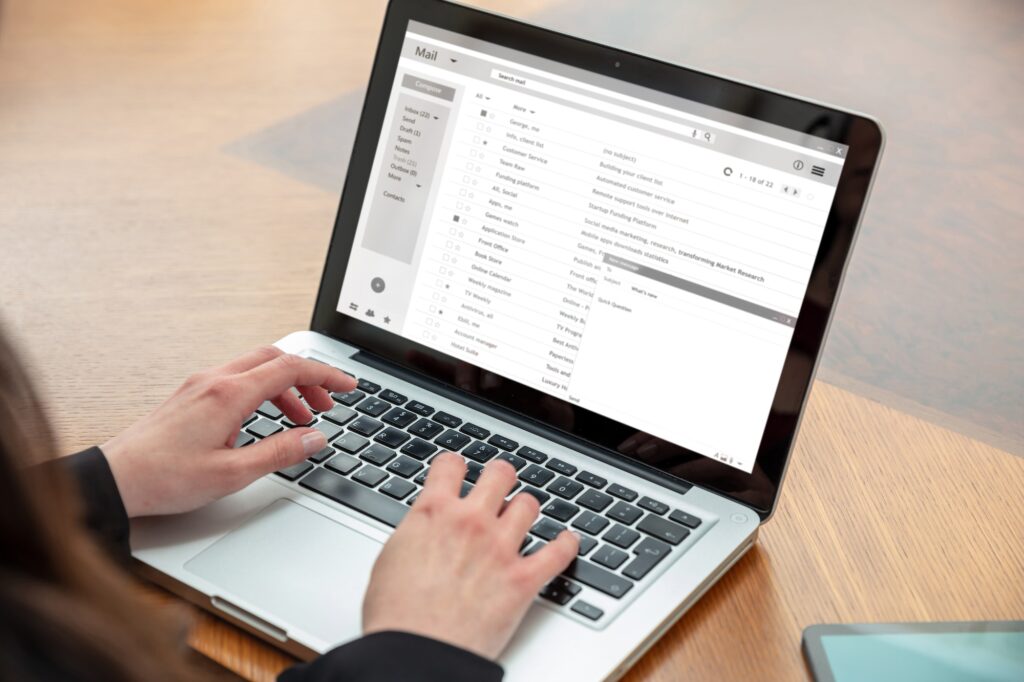Automating email marketing
Welcome to our comprehensive guide on automating email marketing for your business in 2023! In today’s fast-paced digital world, businesses need to keep up with the latest marketing trends and techniques to stay ahead of the competition. Email marketing is one of the most effective and cost-efficient ways to engage with your target audience, build brand awareness, and drive sales. However, creating and sending personalised emails to each individual subscriber can be time-consuming and resource-intensive, especially if you have a large email list.
This is where email marketing automation comes in. By automating your email campaigns, you can save time and resources while also increasing your productivity and efficiency. With the right strategies, tools, and techniques, you can send personalised and relevant emails to your subscribers at the right time and with the right message. This can help you build stronger relationships with your subscribers, boost engagement, and ultimately drive more conversions and revenue for your business.
In this guide, we’ll walk you through the steps to successfully automate your email marketing campaigns in 2023. We’ll cover everything from setting up your email automation system, segmenting your email list, creating effective email content, and analysing your results. Whether you’re new to email marketing automation or looking to enhance your existing strategies, this guide has something for everyone. So, let’s dive in and learn how to automate your email marketing campaigns for maximum impact in 2023!
Setting up your email automation
Creating an email marketing account for automated outreach is a crucial step in your outreach strategy.
Here are the steps to create your email marketing account for automated outreach:
- Choose an Email Marketing Provider: The first step in creating your email marketing account is to choose an email marketing provider. There are several email marketing providers available, including Mailchimp, Constant Contact, and Campaign Monitor. Consider factors like pricing, features, and integrations when choosing a provider that fits your needs. Check out Mailchimp here: https://mailchimp.com/en-au/
- Create an Account: Once you have chosen an email marketing provider, create an account by visiting their website and selecting the “Sign Up” or “Create Account” button. Follow the prompts to enter your information, such as your name, email address, and password. Some providers may require you to verify your email address before you can access your account.
- Set up Your Account: Once you have created your account, it’s time to set up your account by adding your company information, such as your logo, website URL, and contact information. Some providers may also require you to add a physical address for compliance with anti-spam laws.
- Create Your Email List: The next step is to create your email list. Upload your existing contacts or manually add them to your list. Make sure to segment your list based on factors like demographics, behaviour, and interests to create targeted and relevant campaigns.
- Design Your Email Template: To create automated outreach campaigns, you’ll need to design your email template. Most email marketing providers offer pre-designed templates that you can customise or create your own using a drag-and-drop editor. Make sure to design a template that aligns with your brand and is visually appealing.
- Create Your Email Campaign: Once you have designed your email template, it’s time to create your email campaign. Choose the type of campaign you want to create, such as a welcome series or a promotional campaign, and select your email list. Customise your email content, including your subject line, body copy, and call-to-action.
- Set up Automation: The final step is to set up automation for your email campaign. Choose the trigger that will initiate your automated campaign, such as a sign-up or a purchase, and set the timing for your automated emails. Some providers may also allow you to set up conditional branching, which sends different emails based on your recipient’s behaviour.
Remember to choose an email marketing provider that fits your needs, segment your email list, design a visually appealing email template, and set up automation for your email campaigns to achieve your outreach goals.

Segmenting your email list
Segmentation is a crucial aspect of email marketing that helps you target your audience with personalised messages and increase engagement rates.
Check out this strategy for segmenting your email list:
- Define Your Segmentation Criteria: The first step in segmenting your email list is to define the criteria you will use to divide your audience into groups. Some common segmentation criteria include demographics, interests, behaviour, location, and purchase history. Make sure the criteria you choose align with your marketing goals and the data you have about your audience.
- Collect and Analyse Data: Once you have defined your segmentation criteria, it’s time to collect and analyse the data you have about your audience. You can use tools like Google Analytics, customer surveys, and CRM software to get insights into your audience’s behaviour and preferences. Analyse this data to identify patterns and trends that can inform your segmentation strategy.
- Create Segmentation Groups: Based on your segmentation criteria and data analysis, you can create different groups or segments within your email list. For example, you might create segments for customers who have made a purchase in the past month, customers who have shown interest in a specific product or service, or customers who live in a specific region.
- Develop Personalised Messaging: Once you have your segmentation groups in place, you can develop personalised messaging for each group. This could include different subject lines, content, and calls to action that are tailored to each group’s interests and needs. This will help increase engagement rates and drive conversions.
- Test and Refine: It’s important to test and refine your segmentation strategy over time to ensure that it’s working effectively. You can use A/B testing and analytics tools to measure the effectiveness of your email campaigns and make adjustments as needed.
- Automate Your Segmentation: To streamline your segmentation efforts, you can use automation tools like Mailchimp or Campaign Monitor. These tools allow you to automatically segment your email list based on specific criteria, and send personalised messages to each group.
Remember to continuously test and refine your strategy to ensure you’re delivering the most relevant and engaging content to your audience.
Creating effective email marketing content
Creating effective email content is essential to engaging your audience and driving conversions. Check out this strategy for creating effective email content:
- Define Your Email Goals: The first step in creating effective email content is to define your email goals. Are you trying to increase sales, promote a new product or service, or simply build brand awareness? Knowing your goals will help you tailor your content to achieve the desired outcome.
- Understand Your Audience: To create effective email content, you need to understand your audience’s needs and preferences. Use customer data and surveys to gain insights into your audience’s interests, pain points, and purchasing behaviour. This information will help you craft messaging that resonates with your audience and encourages engagement.
- Craft Compelling Subject Lines: Your email subject line is the first thing your audience will see, so it’s essential to craft a compelling subject line that captures their attention. Use action-oriented language and create a sense of urgency or curiosity to encourage recipients to open your email.
- Develop Engaging Content: The content of your email should be engaging, informative, and visually appealing. Use short paragraphs, bullet points, and images to break up the text and make it easier to read. Tailor your content to your audience’s interests and needs and include a clear call to action (CTA) that encourages recipients to take action.
- Optimise for Mobile: With more than 50% of emails being opened on mobile devices, it’s essential to optimise your email content for mobile viewing. Use a responsive design that adjusts to different screen sizes, and make sure your content is easy to read on smaller screens.
- Test and Refine: To create the most effective email content, it’s essential to test and refine your messaging over time. Use A/B testing to test different subject lines, content, and CTAs to identify what works best for your audience. Analyse your email performance metrics, including open rates, click-through rates, and conversion rates, to make data-driven decisions about your content.
Remember to continuously test and refine your messaging to ensure that you’re delivering the most relevant and compelling content to your audience.
Analysing your email marketing results
Analysing your outreach results is crucial to understanding the effectiveness of your outreach efforts and making data-driven decisions to improve your strategy. Here is a detailed strategy for analysing your outreach results:
- Define Your Key Performance Indicators (KPIs): The first step in analysing your outreach results is to define your KPIs. KPIs are metrics that help you measure the success of your outreach efforts, such as the number of leads generated, conversion rates, or revenue generated. Make sure to choose KPIs that align with your business goals and are measurable.
- Collect Data: Once you have defined your KPIs, it’s time to collect the data you need to analyse your outreach results. Use tools like Google Analytics, CRM software, and social media analytics to gather data on your outreach efforts’ performance. Make sure to collect data consistently over time to track your progress.
- Analyse Your Data: Once you have collected your data, it’s time to analyse it to gain insights into your outreach performance. Look for trends and patterns in your data that can help you identify what’s working well and what needs improvement. You can use data visualisation tools like graphs and charts to make it easier to spot trends and patterns.
- Identify Opportunities for Improvement: Based on your data analysis, identify areas where you can improve your outreach efforts. For example, if your conversion rates are low, you might need to adjust your messaging or targeting. If your open rates are low, you might need to improve your subject lines or email content. Make sure to prioritise the areas that will have the most significant impact on your KPIs.
- Implement Changes: Once you have identified opportunities for improvement, it’s time to implement changes to your outreach strategy. Use A/B testing to test different approaches and monitor your KPIs to measure the effectiveness of your changes.
- Continuously Monitor and Adjust: Analysing your outreach results is an ongoing process, and it’s essential to continuously monitor and adjust your strategy based on your data. Use data to inform your decisions and make adjustments to your strategy as needed to improve your outreach performance over time.
Closing thoughts
Automating email marketing for your business in 2023 is an essential strategy that can help you save time, improve efficiency, and increase revenue. By following the steps outlined in this guide, you can successfully set up automation for your outreach efforts, segment your email list, create effective email content, analyse your outreach results, and create your email marketing account for automated outreach.
Remember to choose the right email marketing provider, segment your email list based on factors like demographics and behaviour, design visually appealing email templates, create personalised and relevant email content, track your metrics and analyse your results to continuously improve your outreach efforts. With these tips and strategies, you can stay ahead of the competition and achieve your business goals in 2023 and beyond. So don’t wait any longer, start automating your email marketing efforts today and watch your business grow!
Still struggling to write your email content? Try Scribespace for free today and let us do the work (most) for you!

Leave a Reply